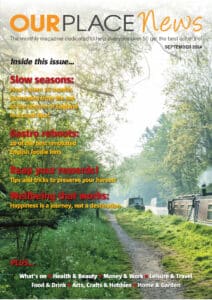We do it 20,000 times a day but the way we breathe in different scenarios can have a big impact. From tongue position to finding your D-spot, experts share breathwork techniques.

“Running is often where it goes wrong,” says breathing re-trainer Jane Tarrant, founder of Link Breathing. “The errors are switching to mouth breathing, upper-chest breathing and thinking you need to go visually big by taking gulps of air when actually you want to breathe low and efficiently into the bottom of the lungs.”
How to breathe… when you’re exercising
Fast chest breathing will also raise the heart rate, which is natural in exercise, but ideally you want to try to lower it by slowing your breathing down, inhaling through the nose and expanding the ribs out sideways like an accordion. Tarrant suggests pacing your breathing – “Try going in for five, out for five, or whatever you can manage” – which should increase efficiency and help you exercise for longer.
“Humming is good for exercise, too, as it helps open up airways by creating more nitric oxide,” she says, which acts as a blood vessel and airway dilator, helping deliver oxygen to your cells more efficiently. “I hum on my bicycle as it helps me slow my breath.”
… to help your core
Breath coach and Breathguru app founder Alan Dolan says he often sees clients who have a “master-servant” relationship with their body, where “they’re amazingly toned but they’re also imprisoned by their core as the muscles are so tight. It’s important to put flexibility into your body as well as tension – if you’re doing core work, what are you doing to release the core?”
He recommends some breathwork after every workout. “That might just be stretching – , or the yogic practice of shavasana – lying down on the ground doing nothing, just a very soft abdominal breath.”
… when you need to focus
“Box breathing” is a technique used by US Navy Seals to steel the nerves and increase focus, but it can be applied to civilian life when you have a daunting task ahead, says breath coach Aimee Hartley, founder of The Breathing Room and School Breathe CIC, which teaches primary schoolchildren the benefits of breathing well. “Breathe in for a count of four, hold for four, breathe out for four, then hold for four.”
This technique is effective because you produce more nitric oxide on a breath hold, which helps lower blood pressure and calm the mind. “It’s a proven breath technique that I often use in sessions when I’m coaching CEOs,” she adds.
… when you’re struggling to sleep
Hartley recommends left nostril breathing if you’re trying to drift off. This activates the right part of the brain, which stimulates the parasympathetic – or “rest and digest” – nervous system. Just lie on your side, block your right nostril and slowly breathe with your left.
Otherwise, Tarrant says two minutes of conscious breathing with an extended exhale – “a simple in for four, out for eight” – will help slow down the heart rate and relax the body, while Dolan recommends Yoga Nidra, “a beautiful guided relaxation throughout the whole body” which uses gentle abdominal breathing. Try YouTube for videos.
… when you’re feeling stressed
A stressed person is like an upside-down pyramid, says Dolan: “The mind is super-stimulated and there’s not much connection to the body.” The best way to flip this is to focus on your feet. “Stand still, with one or both hands on the abdomen and do a slow, abdominal breath through the nose. Then bring your attention to your feet – do this by envisaging the soles touching the ground, rather than physically looking at them – sending those energetic roots into the earth to recharge.”
Another good stress-reduction technique is coherent breathing, says Hartley. “Try going for a walk, breathing in for five steps and out for five steps.
Depending on your pace this can bring you to the optimum breath count of about five breaths a minute.” Most of us are over-breathers, with the average adult breathing at rest between 12 and 18 times a minute. Slowing things down can reduce stress and improve circulation and heart health.
“To be healthy you need to have a variety of spaces between heartbeats – like five milliseconds, 10 milliseconds, six milliseconds” she says. “This is called heart-rate variability, which coherent breathing has been proven to help with.”
… when you’re having digestive problems
Deep abdominal breathing massages the vagus nerve, which runs down the body through the diaphragm, and is the main component of the parasympathetic nervous system.
“We breathe between 17,000 and 20,000 times a day, so if each one of those breaths is massaging the vagus nerve it will help create a healthy digestive system,” says Hartley.
One way to practise deep abdominal – or diaphragmatic – breathing is the “belly bag” method. “Lie on the floor, legs bent, hip-width apart with knees touching,” says Hartley. “Place a book or wheat bag on your stomach below the belly button. Breathe in for five, out for five, and feel the resistance of the book’s weight as you breathe in. It comes with practice but this will eventually activate a diaphragmatic breath.”
Though there is more to IBS than poor breathing, it doesn’t help that many of us are in “fight or flight” mode at mealtimes, adds Tarrant. “Your body will struggle to digest if you’re in a stress state. The best thing to do before mealtimes is take some conscious slow breathing, just in the time it takes to walk to the kitchen. Slowing your breath down will switch your nervous system into ‘digest’ mode.”
… when you’re having a panic attack
Tarrant says: “Someone having a panic attack will think, ‘I need more air’, but what they actually need to do is pause, and restart with a slower breath.
It’s also important to stop upper-chest breathing, which is shallow, anxiety-inducing and inefficient.”
She adds that when an attack comes on you should try to focus on your “D-spot” (the point just below the split of the ribs, where your diaphragm is – see Find your D-spot, below ) – to bring the breath down into the bottom of the lungs and breathe as quietly and calmly as possible.
Carbon dioxide acts as a dilator, which opens up the airways and blood vessels, says Tarrant, so by pausing or prolonging your exhale, you allow oxygen to be more efficiently delivered to the body’s cells.
“During optimal breathing, imagine you have three red buses side-by-side on a ‘motorway’ (blood vessel) carrying oxygen to the cells. CO2 keeps the road wide as well as letting the oxygen off the bus, like porters opening the doors.
The CO2, finishing its shift, gets on the bus and goes back around to the lungs to be breathed out, but it needs time to do its job before it leaves.
If you start to over-breathe, you don’t maintain enough CO2 and your blood vessels reduce down to two lanes, and if you become panicky, then one lane. That’s why you can’t think clearly.”
Getting the breathing basics right
Breathe through your nose
“Inhaling through the nose is better for a number of reasons,” says Tarrant. Unlike the mouth, “it filters out viruses, bacteria and allergens, and it moistens the air and warms it in the cold.” The latter is particularly important for asthmatics, as cold, dry air can trigger an attack.
“Then there is nitric oxide, which you make through nose but not mouth breathing,” says Tarrant, and which can help lower blood pressure and boost exercise performance.
While some people have structural issues which can prohibit nose-breathing, Tarrant says for many of us it’s about retraining. “Start with nose breathing for a minute, then two minutes, and slowly build up from there over time.”
Find your D-spot
Place one hand on your chest and with the thumb of the other hand find the “bouncy” spot just below the split of your ribs, where your diaphragm is – this is what Jane Tarrant calls the “D-spot”.
When we breathe in, the diaphragm is meant to plunge downwards, moving your thumb outwards.
“If you picture the lungs as an upside-down tree, we should be breathing into the canopy, with a slight flare of the ribs, but most of us are breathing into the lower branches (or upper chest breathing),” says Tarrant, which will move the hand on the chest upwards.
Don’t forget your tongue
The position of the tongue plays a crucial role in supporting good nose breathing, says Tarrant. Ideally the tongue should be sealed against the roof of your mouth, but not touching the front teeth, in the shape it would be if you said the letter “N”. This will open up the nasal airway.
“Try dropping your tongue to the bottom of your mouth while nose breathing, and you will notice that it feels narrower,” Tarrant adds.
(Story source: The Guardian)

